Text
The Most Visited Volcanoes in Costa Rica
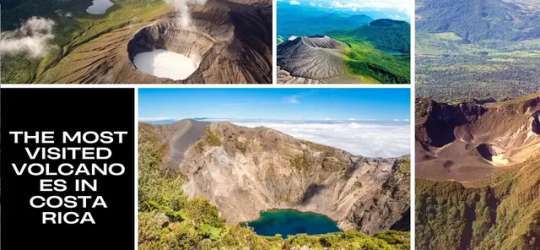
Costa Rica is a country with a lot of volcanic activity. It has more than 60 volcanoes, of which about 20 are active. Volcanoes are an important tourist attraction for the country, and attract thousands of visitors every year. The most visited volcanoes in Costa Rica are: - Arenal Volcano - Poás Volcano - Irazú Volcano - Rincón de la Vieja Volcano - Turrialba Volcano Arenal Volcano Arenal Volcano is the most active volcano in Costa Rica. It is located in the Alajuela Province, about 90 kilometers northwest of the capital, San José. Arenal Volcano has a height of 547 meters, and its last major eruption was in 1968. Arenal Volcano is a very popular tourist destination. Visitors can go hiking, trekking, cycling, and bird watching in the surrounding area. They can also visit the Arenal Observatory Lodge, which offers stunning views of the volcano.
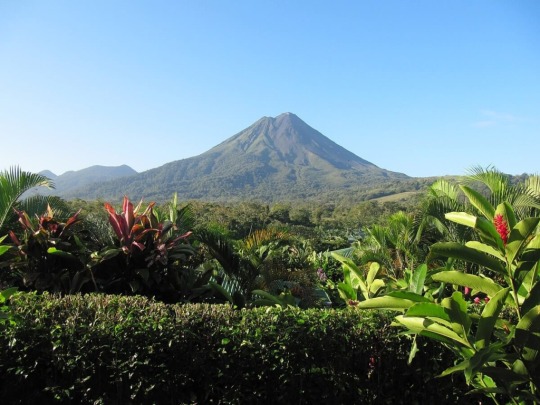

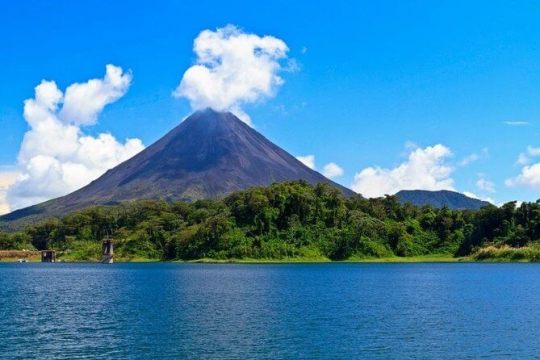
Poás Volcano Poás Volcano is the highest volcano in Costa Rica. It is located in the Alajuela Province, about 50 kilometers northwest of the capital, San José. Poás Volcano has a height of 2,704 meters, and its last major eruption was in 1953. Poás Volcano is a very popular tourist destination. Visitors can go hiking, trekking, and cycling in the surrounding area. They can also visit the Poás Volcano National Park, which houses an active crater with a sulfur lake.



Irazú Volcano Irazú Volcano is the youngest volcano in Costa Rica. It is located in the Cartago Province, about 50 kilometers east of the capital, San José. Irazú Volcano has a height of 3,432 meters, and its last major eruption was in 1965. Irazú Volcano is a very popular tourist destination. Visitors can go hiking, trekking, and cycling in the surrounding area. They can also visit the Irazú Volcano National Park, which houses three active craters.


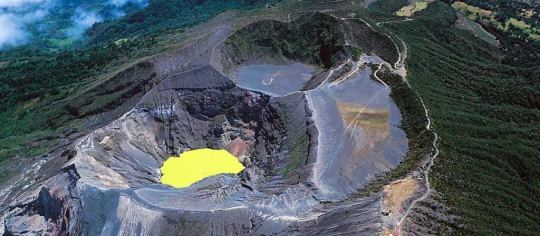
Rincón de la Vieja Volcano Rincón de la Vieja Volcano is an active volcano located in the Guanacaste Province, about 250 kilometers northwest of the capital, San José. Rincón de la Vieja Volcano has a height of 1,916 meters, and its last major eruption was in 1995. Rincón de la Vieja Volcano is a very popular tourist destination. Visitors can go hiking, trekking, cycling, and bird watching in the surrounding area. They can also visit the Rincón de la Vieja National Park, which houses a variety of hot springs, geysers, and fumaroles.



Turrialba Volcano Turrialba Volcano is an active volcano located in the Cartago Province, about 60 kilometers east of the capital, San José. Turrialba Volcano has a height of 3,470 meters, and its last major eruption was in 2016. Turrialba Volcano is a very popular tourist destination. Visitors can go hiking, trekking, and cycling in the surrounding area. They can also visit the Turrialba Volcano National Park, which houses a variety of tropical forests, lakes, and rivers.

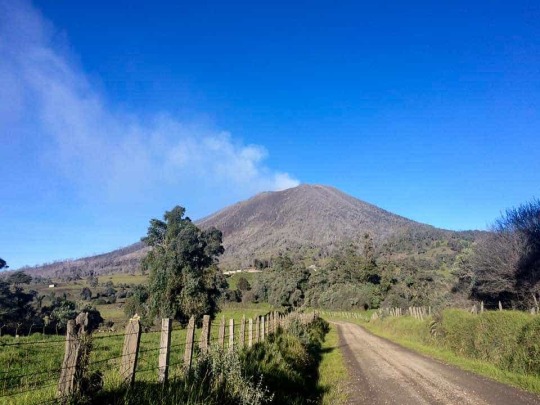
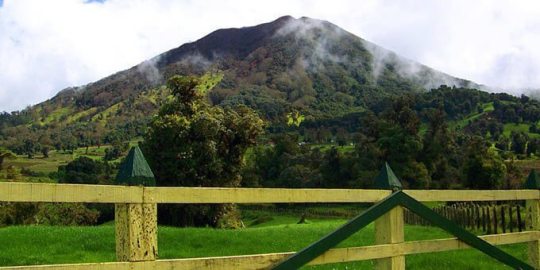
Tips for Visiting the Volcanoes of Costa Rica - Before visiting a volcano, it is important to check with local authorities to know the status of volcanic activity. - It is important to wear comfortable clothes and sturdy shoes for hiking in volcanic areas. - It is important to bring water, food, and a hat to protect yourself from the sun. - It is important to be respectful of the environment and not litter in volcanic areas. The volcanoes of Costa Rica are a natural wonder that offer visitors a unique experience. With a little planning, you can enjoy a safe and memorable visit to these amazing volcanoes. Read the full article
1 note
·
View note
Text
Gandoca Manzanillo Wildlife Refuge
Turquoise water and rocky white sand beaches backed by coconut trees and lush rainforest are characteristic of the southern Caribbean coast of Costa Rica. Gandoca Manzanillo Wildlife Refuge protects roughly 70% of the southern Caribbean which stretches from the little village of Manzanillo all the way down to Panama. The wildlife refuge is remote with wild white sand beaches, picturesque little coves, rocky outcrops, and rainforest teeming with wildlife.
Wildlife
On land, monkeys, coat, sloths, iguanas, poison dart frogs, and more can be found in Gandoca Manzanillo Wildlife Refuge. Over 350 bird species can be seen within the park: the red-capped manikin, the red-lored parrot, and the chestnut-mandibled toucan to name a few.
Offshore, the coral reef attracts marine life to the park. The waters here are some of the clearest in the country when the water is calm (August through October) – ideal for snorkeling! Three different dolphin species (including an endemic freshwater species), four different sea turtle species (from March to July), manatees, crocodiles, lobsters, and long-spine sea urchins have been seen offshore.
Gandoca-Manzanillo Highlights
Mirador Gandoca Manzanillo via @ralf_cahuita
One of the highlights and best photo opportunities is Mirador Gandoca Manzanillo, the viewpoint overlooking the picturesque Manzanillo Beach. From the lookout, you can take the staircase down to the beach for a swim.
Within the wildlife refuge, Punta Mona (monkey point) is a refuge for waterfowl. South of Punta Mona is a natural oyster bank and the only red mangrove on Costa Rica’s Caribbean coast.
Further south, Playa Gandoca is a brown-sand beach backed by wetlands where sea turtles return annually to nest.
Gandoca-Manzanillo Hiking
A coastal trail beginning in the town of Manzanillo stretches 3.4 miles to Punta Mona. The first section of the trail out to Tom Bay (a roughly 40-minute walk) is the most frequently traversed and clearly marked. If you decide to head out beyond that, it is recommended that you take a guide.
To reach the main hiking trail within the park, walk along the beach south of Manzanillo. You may have to cross a small river at certain times of the year. On the other side of the little river, the trailhead picks up!
Guided Hike of Gandoca-Manzanillo Wildlife Refuge:
We highly recommend exploring the Gandoca-Manzanillo Wildlife Refuge with a professional naturalist guide. You will see much more wildlife and discover the unique attributes of the ecosystem within the park! Additionally, this is a less frequently visited area of the country. A guide will help you make the most of your time and bring you to the best places! Talk to a Costa Rica Expert to arrange the details of your adventure as well as any additional transportation or accommodation needs.
The Gandoca-Manzanillo Refuge Jungle Hike
A great way to see the amazing and lush Caribbean rainforests of Costa Rica. You will see trees covered with lichen, bromeliads, orchids, and mosses creating an abundance of life and beauty. There are approximately 384 species of birds, that exist in the forest and your nature guide will point different species like hummingbirds, tanagers, owls, and toucans. You may also see different types of wildlife like white-faced monkeys, howler monkeys, sloths, iguanas, snakes, poisonous frogs, and many other types of animals. You will learn about the many types of medicinal plants that are native to Costa Rica, learn about the natural history, and understand Afro-Caribbean customs. On your way back, you can stop and enjoy a delicious Caribbean meal at the popular restaurant Maxi’s at your own cost before we head to the beach! All of our guides speak both English and Spanish, but you may wish to request one of our French and German-speaking guides.
Gandoca Manzanillo FAQs:
What hotels are near Gandoca Manzanillo Wildlife Refuge?
Hotel Aguas Claras, Almonds and Corals Hotel, Le Cameleon
Is there an entree fee for Gandoca Manzanillo Wildlife Refuge?
The entrance is free!
What should I bring to Gandoca Manzanillo?
Bring a swimsuit, flip-flops, comfortable hiking clothes, change of clothes, towel, sunscreen, sunglasses, water, hat, and bug spray.
What are the Gandoca Manzanillo Wildlife Refuge hours?
8 am – 4 pm
What is the weather typically like at Gandoca Manzanillo Wildlife Refuge?
The southern Caribbean coast is one of the few areas of the country in which the weather contrasts with the rest of Costa Rica. September and October are the driest months on the Caribbean.
For more information, check out our favorite national parks in Costa Rica or browse our vacation packages to get started planning your trip!
Related Article:
Cahuita National Park Guide
Carara National Park Guide
Rio Celeste Waterfall & Tenorio Volcano National Park Guide
Rincon de la Vieja National Park Guide
Poás Volcano National Park Guide
The post Gandoca Manzanillo Wildlife Refuge appeared first on Costa Rica Experts.
from Gandoca Manzanillo Wildlife Refuge
1 note
·
View note
Text
Traveler's Guide to Costa Rica
Costa Rica is a country that really sparked my love for travel and culture. It was one of my first trips and I was looking for adventure. I got my adrenaline fill and still had time to relax on some of the most beautiful beaches I have ever seen. To this day it is one of my favorite places. You have to put this one on your list.
WHY YOU SHOULD GO
It is breathtakingly beautiful, bursting at the seams with abundance, and so manageable for new travelers. Out of all the countries I’ve been to, Costa Rica is one of the easiest to visit.
The Size
It is a fairly small country, only about the size of West Virgina, so you can hit up all of the hot spots in one trip. I was there for 11 days and feel as though I got a nice taste of the culture in that short time.
The Currency
Many places that you patron while there accept the US dollar. There will usually be a conversion sheet and they give change back in the local currency, the Colón (Colones plural).
The Locals
IN my experience, the locals are extremely kind and hospitable. Like anywhere, you have to keep your wits about you. However, I never once felt uncomfortable or stressed out by the locals. If you have ever been to Nassau, Bahamas, you know what I mean by “stressed out” by the locals. There were no street vendors trying to tie bracelets on my wrist and demand a tip or harassing you to buy their goods. There is a bit of cat calling, but I recommend just ignoring it and staying a group, as always.
The Activities
There is so much to do! Whether you want to go bird watching, white-water rafting, or beach hoping, you can really choose the intensity level of your trip. I saw groups and travelers of all ages.
The Biodiversity
One of their largest industries is ecotourism. I believe my tour guide mentioned and although their landmass is only .03% of the Earth’s surface, but they account for 5% of the world’s biodiversity. You will see animals that you never thought you’d see in the wild (can you say, Toucans)!?
WHERE YOU SHOULD GO
The entire country is so beautiful it is hard to choose just a few cities/regions, but here are my absolute favorites:
The Arenal Region
Volcanoes
Beautiful scenic views with Volcanos on the horizon. You can visit Lake Poás and look down into the crater of the volcano via a huge overlook platform.
Coffee Plantation
I visited the Doka Estate Coffee Plantation where I sampled various roasts of coffee, both hot and cold. The tour was very interactive. We got to see how the beans were dried by the sun and then later roasted to different levels to create different styles of beans. The guides were extremely kind and informative and honestly, they had me at “coffee samples.”
La Fortuna Waterfall
Swim at the base of a breathtaking 200 foot waterfall in the middle of the rainforest, what more can you ask for from a tropical vacation?
Lake Arenal
Go kayaking at the base of the Arenal Volcano in Lake Arenal. Spectacular 360 degree views of untouched natural beauty. I truly love being outside so this was perfect for me.
Monteverde (in Punta Arenas Region)
Santa Elena Cloud Forest
What a unique experience. A cloud forest is a essentially a foggy dream. It is a high altitude, high moisture rain forest habitat that is covered in a dreamy mist. The forest is so alive here. Be sure to bring a rain jacket or poncho as it is extremely damp (mist, hello) and pretty chilly.
Night Tour
I highly recommend going on a night time wilderness tour. You will see many nocturnal and interesting animals and I LOVED it. The forest really does come alive in the nighttime! Here is the one that I did. We saw sloths, bugs with glowing eyes, tarantula, sleeping birds, an eyelash viper and more!
More in Puntarenas Region
Manuel Antonio National Park
One of the most beautiful beaches I’ve been to! Grab a whole coconut from one of the vendors on the way in, relax on the beach and take epic pictures pristine shoreline. They won’t let you bring processed foods or plastic baggies, so bring fresh fruit instead! Be careful, the monkeys and raccoons will snag your food if you aren’t paying attention.
Jaco
This is Costa Rica’s Miami! This is a city that never sleeps, so have a drink or 5 and go dancing at the local bars/clubs. The water here is pretty rough but the beach strip is really beautiful for pictures in the evening.
Alajuela
Sarchi
Just outside of San Jose, in the Alajuela Province, there is a colorful little town called Sarchi. This town is known for their ornately decorated and hand painted ox-cart wheels. You have the opportunity to visit local shops and watch how the wheels are made.
Tips to Remember
Bring a poncho or rain jacket- it will randomly shower in the rainy season, but even when in the dry season, the forests can be very damp. Here is a light weight one that I have. It folds into a little bag which is super convenient.
Stay hydrated- Not only is it extremely hot, but traveling can be very hard on your body and you need to drink more water than usual to operate. Drink your electrolytes!
Bring bug spray- The mosquitoes in Costa Rica are no joke. I use Ben’s 30% DEET. It is carry on friendly at 3.4 ounces and contains DEET, so it is heavy duty.
Use sun screen- Even if you are not usually prone to burning, the summer sun is intense in this part of the world, so it is a good idea to stay protected and reapply frequently.
Bring your personal pharmacy- driving on winding mountain roads can make many people nauseous, so pack Dramamine. It is also always a good idea to bring basic Advil, electrolytes, Tums, Imodium, etc.
Bring a jacket- Though it can be extremely hot during the day, it can get chilly at night, and especially in the mountains.
I hope you are ready to try some traditional gallo pinto (Costa Rican beans and rice) and have an local Imperial beer!
Pura Vida!
XOXO Moon Meagan
1 note
·
View note
Photo

(via Guanacaste National Parks) Guanacaste National Parksby admin | Jan 1, 2021 | national parks, Travel | 0 commentsNote: As of Dec 1, 2020 the following parks and reserves are open with restrictions – Arenal, Barra Honda, Ballena, Las Baulas, Braulio Carrillo, Cabo Blanco, Cahuita, Camaronal, Carara, Cipanci, Corcovado, Diriá, Gandoca-Manzanillo, Grecia, Guayabo, Iguanita, Irazú, Isla del Coco, Manuel Antonio, Monte Alto, Monteverde, Ostional, Poás, Los Quetzales, Rincón de la Vieja, Santa Rosa, Tapantí, Tenorio, Tortuguero, Turrialba.Map of Costa Rica’s Protected Areas
Leaders in ConservationCosta Rica’s National Parks and other protected areas serve as a model of sustainable conservation.The world owes Costa Rica a debt for the social conscience, political will, original economics, and plain old hard work that have led to the protection of a larger percentage of the land as natural habitat than in any other country.The incredible ecological diversity is recognized as an irreplaceable treasure by the people and government of Costa Rica and international organizations including the World Wildlife Fund, Conservation International, The Rainforest Alliance, Worldwatch Institute, Organization for Tropical Studies, MacArthur Foundation and the Nature Conservancy.Other countries including the United States, Canada, Sweden, Denmark, Germany, and Panama have also contributed much to the growth and protection of the wilds of Costa Rica with debt for nature swaps, grants, and scientific, economic and political expertise.National Parks DayEvery August 24th is Costa Rican National Parks day and entry into all parks is free for residents and international visitors!Palo Verde National ParkPalo Verde National Park has a unique dichotomous character. It’s simultaneously a spectacular wetlands and one of the best examples of tropical dry forests remaining anywhere in the world. This dual nature is a result of the Río Tempisque flooding over land located in a relatively arid climate region.The park, like many in Costa Rica’s system consists largely of reclaimed pastureland. Fortunately, in the case of Palo Verde, the haciendas that preceded the park were somewhat different than the clear-cut ranches of the volcanic highlands. The underlying limestone, and the drier climate of the region gave rise to native forests where trees were sparser and there was more grass and forage in the natural ecosystem. Clear-cutting was not always necessary to ranching, and the park escaped it’s tenure as pasture with less damage than most.Birds Dry Season and RainyBirds are the biggest attraction at Palo Verde National Park. In the wet season the floodwaters of the Río Tempisque spread to form extensive marshes that welcome migrant birds from the Americas at the onset of winter. As the December through May dry season (called summer in Costa Rica) progresses the marshes shrink to isolated patches and pools, and the migrants depart for their summer nesting grounds in temperate climates.Many of the resident tropical bird species nest on a small mangrove island in the Río Tempisque. Isla de Pajaros (bird island), as it is known provides a safe place for Cattle Egrets, Roseate Spoonbills, Wood Storks, Green-backed Herons, Anhingas, Great Egrets, and Black-crowned Night-Herons to breed. Other birds you can expect to see in the park include White Ibis, Glossy Ibis, Black-necked Stilt, Black-bellied Whistling-Duck, Snail Kite, American Widgeon, Northern Shoveler, and Blue-winged Teal.In the dry season, many of the trees have dropped their leaves, and the wildlife is concentrated around the ever-shrinking water sources. One of the best strategies for spotting the many species of mammals that Palo Verde National Park protects is to sit quietly near a water source. You may spot Variegated Squirrels, Howler Monkeys, White-nosed Coatis, White-tailed Deer, White-throated Capuchin Monkeys, and Collared Peccaries.Cycling Across the ParkPalo Verde National Park is one of our favorites. When we first visited, there was a little known and unused back entrance to the park, across the Bebedero river. We rode and carried our bicycles across the whole park to the campground near the ranger station (Read about Biking Palo Verde Park).The entrance and the trails it serves are now closed except for official research, but you can rent mountain bikes from the Organization for Tropical Studies station to explore other parts of the park.Getting to Palo VerdeAlthough the back door from Bebedero has been effectively closed, there is another very interesting way to enter the Park. On the Nicoya side of the Río Tempisque, you can hire a boat at the dock in the pueblo of Puerto Humo and power your way upriver to the Park. Arrange with your boatman ahead of time to get a close-up look at the Isla de Pajaros (Bird Island), and perhaps continue upriver past the park where the vegetation closes in and you are sure to see crocodiles.Best Time to VisitPalo Verde is located in one of the driest regions of Costa Rica but when it does rain here the roads can be impassable. Birdwatching is also better in the dry season because there are many migrants who arrive from up north to escape the snow in December through May.Stay in the Park – OTS Lodge and CampingThere are a few parks and reserves in Costa Rica where it’s possible to spend the night in relative comfort and thanks to the Organization for Tropical Studies, Palo Verde is one of them. Lodging, meals and guide services are all available by reservation (See details – OTS Palo Verde Lodge).If you’ve got the gear, camping is also an option. The campground near the ranger station provides access to potable water, showers and restrooms.Guanacaste National ParkMother with infant spider monkeys in the Murcielago sector of Santa Rosa National park on the trail to Bahia/Playa Hachal. Geoffroy’s Spider Monkeys (Ateles geoffroyi) are called mono aranya in Spanish and are also known as Black-handed Spider MonkeyGuanacaste National Park was created in 1989 to connect Santa Rosa National Park with the high elevation cloud forest of Orosi and Cacao volcanoes and across the continental divide to the Caribbean rainforest of Northern Costa Rica. The hope is that together these two parks protect enough land to ensure sufficiently large habitats for wide-ranging species such as jaguars and mountain lions, while simultaneously creating a biological corridor for birds and insects to make local seasonal migrations between the dry forest and the evergreen cloud and rain forests.The park owes its existence in large part to Dr. Daniel Janzen. He successfully raised donations telling international contributors he would show the world “how to grow a National Park.” He launched his campaign when international beef prices were low, and many of the ranch owners were eager to sell their degraded grazing lands. His goals of recreating more of the severely threatened tropical dry forest habitat from cattle pasture, as well as forming a biological corridor are now coming to fruition. Happily, biologists have commented that the habitat is regenerating more quickly than they had hoped.Janzen was also aware that the changes in the land that would benefit the wildlife would leave many ranch hands without work and have a major impact on local communities. His foresight ensured that one of the goals of the park is to encourage local participation in environmental programs, and train and employ locals as park personnel. This attitude is important, because although the National Parks of Costa Rica are part of the world’s heritage, they are also an important part of Tico’s everyday lives.Hiking, Nature Walks and BirdwatchingThe main attraction of Guanacaste National Park is a good brisk walk or a leisurely stroll. The large range of elevations result in trails that cross several ecosystems as you climb from the dry Pacific forests near the border with Santa Rosa National Park to the high elevation cloud forests near the peaks of Orosi and Cacao volcanoes. You can cross the continental divide and climb down to rainforest typical of the Caribbean side of Northern Costa Rica.Among the dry forest inhabitants are Collared Peccaries, Howler Monkeys, White-nosed Coatis, White-tailed Deer, and Variegated Squirrels, Long-tongued Bats, and Capuchin Monkeys. You will almost certainly spot dozens of birds in a hour or two of walking including White-throated Magpie Jays, Orange-Fronted Parakeets, and Crested Caracara (roadside hawks). At higher elevations you may spot Squirrel Cuckoos, Tanagers and Groove-billed Anis.rainfall and weatherThis is one of the hotter drier areas of Costa Rica, and the whole Guanacaste region has more predictable seasons than the rest of Costa Rica. The chance of rain is much less during the dry season from December to April, but the higher you climb, the more likely you are to get wet… any time of the year.Although it is fairly likely that it will rain on any given day during the rainy season (AKA the green season), it is also fairly likely that it will be a short shower in mid-afternoon. The rainy season which lasts from May until November is also usually interrupted by a two or three week dry spell in late July or August called the Veranillo de San Juan (Saint Joseph’s little summer).Quick Facts Guanacaste National ParkGuanacaste is a large park that protects 32,512 hectares where elevations range from 300 to 1659 meters (984 to 5443 feet). The habitats represented here are cloud forest, pasture/farm, and regenerating tropical dry forest.Santa Rosa National ParkTropical Dry ForestSanta Rosa National Park protects some of the last remaining tropical dry forest in the world. The small patch of oak forest near the entrance to the Comelco Ranch is probably representative of the original habitat of much of the park. Ranchers burned most of the plateau region, and African pasture grass (Hyparrenia rufa) and the fire resistant Bignoniaceae trees define the current landscape. Nearer the beaches the habitat becomes more native-like.Guanacaste National Park was created in 1989 to connect Santa Rosa National Park with the high elevation cloud forest of Orosi and Cacao volcanoes and across the continental divide to the Caribbean rainforest of Northern Costa Rica. The hope is that together these two parks protect enough land to ensure sufficiently large habitats for wide-ranging species such as jaguars and mountain lions while simultaneously creating a biological corridor for birds and insects to make local seasonal migrations between the dry forest and the evergreen cloud and rain forests.Beaches-Turtles, Scuba and SurfingThere are two important sea turtle nesting beaches in Santa Rosa, Naranjo and Nancite. The latter is one of two beaches in Costa Rica (the other is Ostional) where Pacific Ridley Sea Turtles come ashore each year in large arribadas to lay their eggs.These mass arrivals can include thousands of individuals in a single night, usually on a new moon in late summer.The beach at Naranjo is also famous for surfing, and the area near witch’s rock was a filming location for the cult surfing classic ‘Endless Summer II.’ There is a campground at Naranjo beach.From outside the park you can arrange scuba-diving trips to Islas Murciélago, (the Bat Islands), off the Santa Elena Peninsula.Hiking Trails and MapsThere are a number of excellent trails in Santa Rosa National Park for day or overnight trips.1:50,000 Topographical maps are available online from Omni Maps (sheets CR50 3048 I, and CR50 3048 IV cover most of the park, but CR50 3048 II, and CR50 3048 III are required for the southern edges)When to VisitThis is one of the hotter drier areas of Costa Rica, and the whole Guanacaste region has more predictable seasons than the rest of Costa Rica. The chance of rain is much less during the dry season from December to April.Although it is fairly likely that it will rain on any given day during the rainy season (AKA the green season), it is also fairly likely that it will be a short shower in mid-afternoon. The rainy season which lasts from May until November is also usually interrupted by a two or three week dry spell in late July or August called the veranillo de San Juan (little summer).Getting ThereLocation – Santa Rosa National Park is located at the northwestern tip of Costa Rica 118 miles (190 km) northwest of San José (136 miles, 219 km by road). Nearest towns Liberia & La Cruz.Driving directions – From San José, take the Interamerican Highway (1) north 136 miles (219 km) passing through San Ramon, Cañas, and Liberia to the signed left turn at the entrance road. Bus – Unfortunately there is not a direct way to reach the Santa Rosa Ranger Station by bus. Buses from San José or Liberia to La Cruz and the Nicaraguan border will drop you at the turnoff from the PanAmerican Highway and you’ll have to walk or hitch-hike the 4miles (7 km) to La Casona. Air – The nearest airport is LIR outside Liberia.Quick Facts Santa Rosa National ParkOne of Costa Rica’s larger parks, Santa Rosa covers 49,515 hectares with a wide range of habitats including beach, mangrove estuary, marine, pasture/farm, and tropical dry forest.History at Santa Rosa National ParkSanta Rosa may owe its early designation as a National Park to an attempted invasion by U.S. troops. The battle that occurred here is a source of great pride in Costa Rica, and the historical significance of the park helped win its protection by executive decrees in 1970 and 1977.William Walker was an American lawyer who had designs on an empire. In June of 1855 he arrived in Nicaragua, propped up a failing regime, and set him self up as Commander-in-Chief. With this tenuous authority, he planned to convert all of Central America into slaving territory and use the slaves to build a canal from Lake Nicaragua to the Pacific (the San Juan River is navigable from Lake Nicaragua to the Caribbean so this canal would have linked the Atlantic and Pacific Oceans as the Panama Canal does today).With the financial backing of the Confederate Union of the southern United States, Walker sent an international army of mercenaries into Costa Rica. When word of the invasion reached the capital, President Juan Rafael Mora organized 9,000 civilians to march to Guanacaste. At the hacienda of Santa Rosa on March 20, 1856, the mercenaries were routed in a 14 minute battle. The victorious Ticos pushed Walker’s forces across the border into Nicaragua where they made another stand in a wooden fort in Rivas. On April 11, 1856 a drummer boy named Juan Santamaría, from Alajuela volunteered to set the fort afire, and although he successfully flushed the mercenaries he lost his life in the battle. He is remembered as a hero.Walker returned to the United States, where he practiced law for a while before returning to Central America in another takeover attempt. In 1860, he was captured by the Honduran government, found guilty of treason and shot. Interestingly, another central figure in this history met a similar fate. President Mora lost political favor and his job after the battle. When he tried to regain control of the country in a military coup, he was captured, tried for treason and died in front of a firing squad the same year as Walker.Amazingly, this single incident encompasses much of the military history of Costa Rica. While Ticos are proud of their war heroes, and established Santa Rosa National Park in part to protect La Casona and the other buildings where the victory occurred, they are even prouder of their remarkably peaceful history.La Casona Hacienda was the site of the most famous battle in Costa Rican history. Now it’s a museum and part of Santa Rosa National Park. This historic building was the site of the ‘epic’ Battle of Santa Rosa in 1856 and has been preserved as a monument. There are displays of military paraphernalia and everyday life at a Tico Hacienda in the mid 1800’s. Keep an eye out for the Long-tongued Bats that roost in the eves of the buildings.Diria National ParkOne of Guanacaste’s Least-Known Attractions. Northern Guanacaste and the Nicoya Peninsula have several well known national parks: the history-rich Santa Rosa, the caves of Barra Honda, the marine preserve and turtle nesting grounds of Las Baulas and the wetlands of Palo Verde — now one of the top birding destinations in the world. But few know about or have visited the wonderful Diria National Park near Santa Cruz. It is the least visited locale in Costa Rica’s national park system, with even fewer tourists than the rarely visited La Cangreja Park, which was featured in the December 2018 Howler issue.The 5,500-hectare park (over 10,000 acres) was created only recently, in 2004. A key objective was to protect more than 380 species of trees that forest the area — many original old growth saved from the deforestation of the mid-20th century — as well as several rivers flowing out of the mountains creating the Santa Cruz region’s water supply. Diria National Park is also the home of rare and endangered bromeliads and cacti, along with a special group of orchids that can survive the extreme dry season conditions.For anyone visiting the northern Nicoya area, a day trip to Diria can give you a totally different Costa Rica experience.When to goIf you’re seeking a great place to hike or mountain bike, see lots of birds and animals along with rare and endangered plants or even just cool off from the heat, you will enjoy Diria. The park has two major areas: the lowland tropical dry forest around the casona (park ranger station) and the tropical humid forests covering much more mountainous terrain, rising to 1,800 meters (almost 6,000 feet) above sea level.The casona vicinity has three hiking trails that follow the rivers through the dry forest. The longest trail leads to beautiful Brazil Falls, requiring a demanding hike through rugged conditions. The park’s main facilities are located at the casona, accessible only by fording a river. Many opt not to drive through, especially in rainy season. The casona has restrooms and is equipped for overnight stays and meals if booked in advance, especially for groups.The rest of the park site can be reached by driving, or more recently, using a system of bike trails extending upward … and further up. You can drive to the crest of the Nicoya Peninsula’s highest mountain ridge, looking back to the mainland and even sighting Palo Verde National Park.
Animals and birds abound throughout Diria and change with the elevation. Howler monkeys, iguanas, anteaters and deer can be seen. Birding is also great here, with more than 140 species that include pale-billed woodpecker, barred antshrikes and long-tailed manakins. All are easily seen in the park, as well as the beautiful elegant trogon, which is found only in the northern Nicoya Peninsula.How to get thereFirst drive to Santa Cruz, from the west taking route 152/route 160 east, or from the east taking route 21. From there, take the road south to Arado; drive around the Arado soccer field and you will see a sign to Diria National Park. The road becomes gravel for the final 6 kilometers. Follow signs to Diria National Park (a 4WD vehicle is recommended). Signs to the park casona take you to the lowland trails (remember you must cross a river) and those marked Los Angeles lead up the mountain. When you reach the ranger station, don’t be surprised if it’s unoccupied; the park has few rangers and those on duty are likely out patrolling, especially when there’s a risk of forest fires during dry season. Many park visitors leave their admission fee on the desk.For anyone visiting the northern Nicoya area, staying in Tamarindo or other beach spots, a day trip to Diria can give you a totally different Costa Rica experience. It can even cool you off a bit, as a bonus for enjoying some real wilderness.When to visitAs applies to most places in Costa Rica, the best time for visiting Diria is between December to April. However, visiting in the rainy season can be a treat if you visit Brazil Falls, which quickly dries out in summer. The downside is that rainy season conditions can be difficult for getting around and the roads might be impassable.Rincón de la Vieja National Park, Guanacaste18 / 41Waterfall inside Rincon de la Vieja National ParkEcological diversity abounds at Rincón de la Vieja National Park, one of the parks in the Guanacaste Conservation Area.This park is a must-visit destination when you are in the Guanacaste Province.Best Hotels in Rincón de la Vieja National ParkPriceHotel Hacienda Guachipelin$$Check PriceAt over 34,000 acres, Rincón de la Vieja has room for two volcanoes, 32 rivers and streams, and an incredible variety of flora and fauna.A number of activities can be enjoyed at the park such as hiking, horseback riding, enjoying hot springs, swimming, picnicking, and camping. Rincón de la Vieja National Park VideoPlayUnmuteLoaded: 10.73%Remaining Time –2:53FullscreenGuachipelin Adventure Combo PassThe best all day adventure combo that includes ziplining, horseback riding, white water river tubing, full buffet lunch, hot springs & volcanic mud bath.Get Your PassRincón de la Vieja is approximately 15 miles northeast of the city of Liberia, which is the capital of the Guanacaste Province.Explore Both SidesWith its location and sheer size, this national park allows you to experience both the Caribbean and Pacific sides of the Cordillera de Guanacaste.The west side of the park on the slope of the volcano that fronts the Pacific Ocean is more arid than the eastern Caribbean-facing side, which means that it has a dry season from February through April.The dry season on the west side allows for great hiking conditions for those that want to hike the slope of the volcano. Atlantic trade winds on the eastern side of the park provide it with an average of 200 inches of rain per year, keeping vegetation lush and growing all the time.There is no distinct dry season on the east, so the tropical ecosystems on that side continually stay damp.The park is serviced by two ranger stations, one in the Santa Maria sector, and the other in the Las Pailas sector.Hiking and horseback riding trails fan out from the Santa Maria ranger station and traverse 5,000 feet in vertical elevation. Picnic areas are also available to rest and rejuvenate before hitting the trails again.Next to Las Pailas ranger station, campground facilities allow you to spend the night in the park.Rincón de la Vieja National ParkWhere to StayView HotelsSee Incredible Flora and FaunaRincón de la Vieja hosts a wide variety of tropical forests, including dwarf cloud and montane ecosystems.Exotic and rare flora and fauna find refuge here including kinkajous, pumas, a variety of monkeys, sloths, tapirs, and jaguars.Rare emerald toucanets and blue-crowned motmots glow in the sunlight along with vibrant fuschia and purple Guaria Morada orchids. Laurel and Guanacaste trees form canopies for birds and mammals to live in.Sightsee and SwimVarious water features are major attractions at the park and include a freshwater lagoon, waterfalls, hot springs, and boiling mud pits.Barra Honda Caverns National ParkThe area of the Tempisque Basin where the Nicoya Peninsula joins the mainland has a foundation of relatively soft limestone. Water has cut extensive caves through Cerro Barra Honda and the other small mountains creating the best know feature of this National Park. However, the park also has well maintained hiking trails. The protected tropical dry forest (though mostly secondary) within its borders is some of the last in the world, and very different from the rain and cloud forests that attract many ecological tourists to Costa Rica.The CavernsThe soda straws, pearls, roses, needles, cave grapes, curtains, terraces, stalactites, stalagmites and other calcareous formations of the more than 40 limestone caverns are the main attraction at Barra Honda National Park.The caves are all in relatively good condition because their vertical entrances are difficult to negotiate. This is also why you need climbing gear, a guide, and permission from the Parks service in advance to enter them.The caves range from a few feet to over 780 feet (240 meters) deep. Pozo Hediondo (Fetid Pit) Cave was named for the aroma of the guano deposited by thousands of resident bats.Until the caverns were discovered and explored in the late sixties, many believed that Cerro Barra Honda was a volcano because of the roaring sounds made by the bats as they departed the caverns en masse, and the fumes from the caves they occupied.Hiking at Barra HondaThe network of hiking trails used to access the caverns are great for exploring one of the rarest habitats on earth, tropical dry forest. The juxtaposition of capuchin monkeys and cactus seems odd, and some of the trees flower only after they’ve dropped all their leaves. Any time of year you can hope to see howler monkeys, deer, racoons, peccaries, kinkajous, agoutis, and anteaters.Maps are available at the ranger station. The main trail is an undriveable continuation of the entrance road that leads through mostly secondary forest to cerro Barra Honda (1,450 feet, 442 meters) where you are rewarded with spectacular views of the Tempisque valley.When to Visit and Where to Stay at Barra HondaThe caves are not open in the wet season because of the danger of flooding by the torrential rains that carved them from the stone. If you are a spelunker the dry season is your best bet.Cabinas and Camping – If you are traveling on a budget, spend the night. It’s one of the few places you can get a bed and a roof inside a National Park. At the ranger station a few minutes up a good gravel road from the entrance (closed from about dusk until 8:00 am) there are four rustic cabinas with bunks for six or eight each.These provide an excellent opportunity for travelers who don’t have either camping equipment, or the money for a lodge or ecocamp, to spend the night in the forest. When we stayed we had the place to ourselves and were on a hiking trail by around 5:15 am (about 15 minutes before sunrise) in order to catch the increased activity of the forest’s residents. We also felt comfortable walking on the broad main trail after dark, when you hear and see a whole new group of birds, insects and animals.There is a camping area next to the ranger station, across the road from the cabinas.If you don’t stay in the park, Nicoya is the closest alternative with lodging options in most price categories (nothing on the top end however).Getting ThereDriving directions From San José, take the Interamerican Highway (1) north just past the turn for Las Juntas de Abangares. Turn left on 18 towards San Joaquín and then follow the signs for the spur to the new Tempisque bridge. Once you rejoin the main road, continue southwest about 10 km then turn right towards the villages of Barra Honda and (also known as Nacaome) Santa Ana, and follow signs for the park entrance. The park headquarters is through the gate (closed at dusk) less than a mile up a good gravel road (4WD not required) on the left.Bus Unfortunately there is not a direct way to reach Barra Honda by bus. You can get a bus from San José to Nicoya, then there is one bus a day (12:30 p.m.) from Nicoya to Santa Ana which is about a 30 minute walk from the entrance.Daily departures from San José, Terminal Alfaro at 6:30 a.m., 8:00 a.m., 10:00 a.m., 1:30 p.m., 2:00 p.m., 3:00 p.m., 5:00 p.m., 156 km, 6 hours, $5.20, Alfaro Bus, telephone (506) 2222-2666Quick Facts about Barra Honda National ParkThe protected area is 5,600 acres (2,300 hectares, 8.75 square miles, 7 times the size of central park NYC) with elevations ranging from 20 to 442 meters (66 to 1450 feet). The habitats represented here are margin/edge and regenerating tropical dry forest.Hours The gate is open from 8:00 a.m. until dusk, if you are staying in the park, the rangers leave the station door open until they go to bed around 8:30 p.m.Hiking trails Maps are available at the ranger station. The main trail is an undriveable continuation of the entrance road that leads through mostly secondary forest to cerro Barra Honda (1,450 feet, 442 meters) where you are rewarded with spectacular views of the Tempisque valley.Habitats Tropical lowland dry forest, pasture, limestone caves.Tenorio Volcano National ParkQuite possibly our favorite national park. I know, I know, they can’t all be our favorite, but…Tenorio has everything you could want in a tropical forest natural area and every time we visit we find something new to love. Hiking to the sky blue Celeste waterfall is a highlight, but the hanging bridges in the rainforest and trail to Lago Danta through the cloud forest from the Heliconias entrance are equally amazing.For decades the area was nearly undiscovered but in 2018 twelve years of bridging river fords and improving roads culminated in the completion of the asphalt all the way to the park entrance. Visits exploded and by April of 2019 the park service was forced to impose quotas on the number of hikers and birdwatchers allowed on the trail.Celeste WaterfallAt a glance these are what puts the region around Bijagua on the list of the best places in Costa Rica. From ranger station at the west entrance of Tenorio National Park (El Pilón) to the azure tinted cataract a couple of kilometers to the south.You can make a loop out of the trail by continuing south to the teñiderios (Teñi de rios – dyeing of the rivers) then west along the other bank of the river to the hot springs and out to the road at the west entrance near Catarata Celeste Lodge. The road leads north to the new car bridge over the river and back to the ranger station.Hiking TrailsThe “Crater Hike” is only available with special permission along with an indigenous guide but well worth the extra effort.Main Park Entrance (El Pilón)The best way to experience the area, in fact the only way to see much of it, is on foot. You don’t have to be a Sherpa to visit the azure blue catarata río Celeste in Tenorio National park or the rainforest shrouded slopes of Miravalles volcano but you do have to walk because they’re only accessible by trail. Anywhere you walk in the area you’re likely to see birds and other wildlife (even in or near town).The hiking trail to Celeste waterfall and the other attractions around the main entrance is described above.Heliconias & Lago DantaThere is a little known entrance to the park at Heliconias Ecolodge Community Project. They have a network of excellent trails leading through their private protected forest to a series of hanging bridges through the rainforest canopy. On our last visit we went on the bridges trail under the stars and it was Awesome.Starting at the top end of the Canopy Bridges trail there is a 3 km spur that climbs up to the national park boundary and on to Lago Danta (Tapir Lake). We’ve never seen tapirs here but we’ve seen fresh tracks and they are more common here than nearly anywhere else in Costa Rica outside Corcovado National Park.There are also many abandoned or nearly abandoned roads where you can walk or mountain bike around Heliconias, Bijagua or any of the remote lodges and Miravalles National Park is literally right across the street.Natural Hot SpringsNOTE: In 2017 the park service closed the east entrance and the trail to the hot springs due to overcrowding.The hotsprings here really are natural. Commercial operations in the region have started the inevitable process of taming the geothermal mineral waters for spas and some of the pools in the National Park are off limits due to dangerously high temperatures, but there are still places along the lower Río Celeste where you can relax your tired muscles in completely natural hot springs (see map at bottom of page).For your own safety please respect all closures, warnings, and regulations posted by the park administration.BirdwatchingWe considered adding an extra star to the rating system just for this region because five out of five doesn’t really do it justice.Costa Rica is know for its incredible diversity of micro-climates, ecological zones and habitats and this valley between two volcanoes is a perfect example.The continental divide follows the slopes of volcán Miravalles down to the southeast to a point where Tenorio starts rising just outside Bijagua (in front of the Tenorio Lodge in fact). It’s not dramatic geographically and you won’t notice it as you’re driving or walking because the valley is quite broad here, but this dip in the continental divide is a mountain pass from the Caribbean slope to the Pacific.This creates a natural flyway from Lago de Nicaragua, Caño Negro and the other wetlands in the northern Caribbean lowlands to the Pacific coast and Palo Verde wetlands along the Río Tempisque. It seems unusual at first to see a flock of Roseate Spoonbills juxtaposed against the mountains but once you look a the geography it’s not surprising that this area hosts species from a wide range of habitats.Getting There and When to VisitNOTE: On April 11 2019 the National Park announced on its official facebook page that limits would be imposed on the number of visitors to reduce overcrowding. No more than 500 people will be allowed in the park at one time and no more than 1,000 per day.The map that’s linked above includes a zoomed out view showing the main ways to arrive in the area along with driving directions from Arenal volcano and the Pacific beaches.Bijagua is right on the continental divide and Tenorio National Park is split by it but tends to have more wet Caribbean/Atlantic climatic association than dry Guanacaste. It’s always possible it’ll rain but pretty unlikely it’ll be drenching downpours for extended periods.Tickets & Hours for Tenorio National Park/Celeste Waterfall Pilón EntranceThe Park is open every day (including weekends and holidays) from 8:00 a.m. until 4:00 p.m. The last entry is at 2:00 p.m.Citizens and Residents ¢800 ($1.20) Non-Residents $US12 Children under 12 are freeThere is no online ticketing or reservation system for Tenorio or the Celeste waterfall trail. Arrive early or join a tour group (agencies have access to advance purchase to guarantee entry).The town of Bijagua and the Tenorio region were directly in the path of Hurricane Otto on Thanksgiving Day 2016. Ten people were killed and couple of tiny communities in northern Costa Rica were devastated by the impact.The area is well on the way to a full recovery and one of the best things you can do to contribute to the local economy is visit and spend money! The Crater “Trail”The top of Tenorio Volcano and the trails leading to it are closed to the public. We entered by special permission with an authorized guide and a baquiano (indigenous guide) who knew the route across the wandering maze of tunnels through the elfin cloud forest at the top.If you have a chance to climb to the steep walled crater to the volcanically heated warm water lake at the top we highly recommend it. There is one trail that begins near the teñiderios west of the main entrance. It is clearly marked as off limits, nearly unused, and peters out into a maze of game trails after a few hundred meters.We entered through private property on the south side of the volcano and went by horseback for the first few kilometers across pasture. Once we entered the forest we tethered the horses and continued the ascent on foot.Because so few people are allowed into the area we were not surprised by the abundance of wildlife – even endangered and shy squirrel monkeys were calmly watching us from the tree tops.You can soak in a sulfuric hot spring a little under two miles down the trail and then enjoy a refreshing dip in a nearby waterfall or stream.Waterfalls with swimming opportunities are frequent along hiking trails. More evidence of geothermal activity in the area are the bubbling mud pools along the trail.Map of the Area
Click to enlarge map – Map of the AreaWitness Volcanic ActivityThe ancient Rincón de la Vieja volcano last erupted in 1983, with a minor ash and lava emission in 1991.Today, adventurous visitors can take a day-long hike to the top of the summit via a six-mile trail that originates at Las Pailas. The journey along the trail will reveal several different ecosystems. You will see Von Seebach, the main crater of the volcano, periodically spew steam as evidence of its geothermal activity.Those completing the hike will be rewarded with views of the Nicoya Peninsula and the Lago de Nicaragua.If the skies are exceptionally clear, you will be able to see Los Jilgueros Lake and almost all of Costa Rica. If you are considering taking the hike, be sure to bring adequate water to stay hydrated, and a warm water-resistant outer layer of clothing.In a country of national parks and wildlife preserves, the Rincón de la Vieja National Park is like no other in Costa Rica.You will long remember the wild flora and fauna in this premier park in the Guanacaste Province.CABO BLANCO ABSOLUTE NATURAL RESERVECabo Blanco Absolute Natural Reserve is located on the southern tip of the Nicoya Peninsula. This was the first national protected area in Costa Rica. It was created in 1963 prior to the national park system, which still carries on to this day. The reserve was created to protect the area from deforestation, mainly due to the efforts of the late Olof Wessberg, who collected funding from several European countries to enable the protection project. The closest towns to the reserve are Montezuma and Mal Pais.Create Your Perfect VacationAdventureAll-InclusiveRomanceBeach TimeSurfingNature & WildlifeOr call toll-free1-866-853-9426The Cabo Blanco Reserve protects 3,070 hectares or 7,586 acres of land. The elevation of the reserve ranges from sea level to 5 meters or 0 – 16 feet. It protects rainforest, beach, mangrove, and river habitats. There are several groomed hiking trails.The isolated reserve is home to plenty of wildlife. There are three species of large felines including margays, jaguarundis, and ocelots. Capuchin and howler monkeys represent the primates. In addition there are anteaters, armadillos, raccoons, kinkajous, pizotes, and deer. There are many reptiles including black and green iguanas, whip-tailed lizards, and boa constrictors. Many species of birds have been identified in the reserve such as scarlett macaws, crested caracaras, magpie-jays, long-tailed manakins, and elegant trogons. Along the shore, there are brown pelicans, sandpipers, frigate birds, brown boobies, and laughing gulls.Cabo Blanco Absolute Natural Reserve is government managed. The reserve is open from 8 AM – 4 PM, Wednesday through Sunday (closed on Mondays and Tuesdays). It has a ranger station that is equipped with basic amenities including public restrooms. The entrance fee to the reserve is $12 per person. There are no overnight facilities. Most visitors stay at hotels in Mal Pais or Montezuma.MORE ABOUT THE CABO BLANCO RESERVEThe reserve is in an ideal location for trees to flourish as it is located between tropical dry and wet forests. The park is home to over 140 different species of trees, including the wild plum, trumpet tree, lance wood, and the sapoditta – famous for producing the material that is used to make chewing gum.The reserve is famous for the white cape; a group of rocks located at the southern tip of the reserve that serves as a dwelling ground for a plethora of bird species. The two beaches of Cabo Blanco, Playa Cabo Blanco and Playa Balsitas are excellent locations to witness hundreds of pelicans as they soar while scouring for fish.There is a beach at the southern tip that has rocks with large fossilized oysters and other ancient marine shellfish. While these are quite a sight, you are not permitted to remove them.AT A GLANCERegion: Southern Nicoya Peninsula Closest town: Montezuma and mal Pais Size in hectares: 3,070 (7,586 acres) Year established: 1963 Elevation in meters: 0 – 5 (0 – 16 feet) Private managed: no Government managed: yes Rangers station: yes Overnight facilities: no Public restrooms: yes Entrance fee: $12pp Days: Wednesday – Sunday (closed Mondays and Tuesdays) Hours: 08:00 – 16:00 Hiking trails: yes Boat tours: no Average temperature range in Fahrenheit: 70 – 90 Average yearly precipitation in millimeters: 2,800 (110 inches) Habitat: mangrove, rainforest, beach, riverHOW TO GET THEREFrom San Jose, take Rt. 27 west to the Puntarenas exit. Take this exit, Rt. 17 west to Puntarenas and follow all the way to the ferry. Cross the Gulf of Nicoya on the ferry to Paquera. From Paquera, take Rt. 160 south to Cobano. Turn left on Rt. 624 and follow to Montezuma. From Montezuma, continue south on the dirt road passing through Cabuya and eventually to the reserve entrance. A four wheel drive vehicle is necessary on this road.WEATHER AND PACKING LISTThe reserve is located in a transitional area from rainforest to tropical dry forest. Day time temperatures regularly reach the low 90s and night time temps are usually in the upper 70s. The reserve receives an average of 2,800 mm or 110 inches of precipitation each year. The driest months are December through April and July.Visitors to Cabo Blanco should pack a bathing suit, towel, shorts, tee shirts, appropriate shoes, rain gear, sun block, and insect repellent. Visit our packing list for more ideas.Fun Fact: The blanco part of the name Cabo Blanco is a result of a section of cliffs and rocks which are permanently colored white due to bird droppings.Las Baulas National ParkToursLeatherbacks are the main draw for most visitors to Las Baulas National Park. Guides offer tours of Las Baulas National Park during leatherback nesting season (October 20 – February 15). Tours to see nesting leatherback turtles are always at night but actual times vary according to high tides. The total number of visitors is restricted to 30 persons per turtles (in groups of up to 15 persons each) and unregistered visitors are not allowed. To make a reservation, visit the Las Baulas National Park headquarters at Playa Grande or call (+506) 2653-0470, ext. 101 up to 8 days before the desired tour date to make a reservation. If you are unable to make a reservation prior to your arrival in country, we recommend visiting the Las Baulas National Park headquarters upon arrival to make your tour reservation in person. Please note that The Leatherback Trust is unable to make reservations for third-parties with Las Baulas National Park. We sincerely regret any inconvenience.Plan your visit around the typical nesting and hatching of each type of sea turtle.Visitors may be asked to wait at the park headquarters until scientists or park guards spot a turtle on the beach. The maximum waiting time can be up to 6 hours. Books, board games and snacks are great ways to pass the time. On some occasions, turtles may not appear on the beach and visitors may be sent home. Visitors are not charged unless turtle sightings are confirmed.© Kip Evans Photography | Mission BlueTo protect the turtles, visitors are reminded to always follow instructions from park guides and guards. Remember to keep a safe distance from nesting turtles and speak in low voices only when necessary. Flashlights and flash photography are restricted on the beach and visitors are asked to stay out of the turtle’s field of vision. Nesting turtles enter a trance as they lay eggs and visitors may see biologists measuring the length of the turtle’s carapace, checking for identification and counting the eggs. Scientists are unable to answer questions during this time, so visitors should direct questions to their local guide or wait until the tour is over. As soon as the nesting turtle begins to cover her nest with her front flippers, visitors are asked to retreat to allow her a full range of motion to camouflage the nest and return to sea.© Andrea Gingerich | Andipantz.comHelp HatchlingsVisitors can help protect turtles by following the rules and spreading the message of conservation. If you see turtle hatchlings on the beach, please keep dogs or other potential predators away and call a ranger at Las Baulas National Park headquarters at (+506) 2563-0470, ext. 101 or The Leatherback Trust’s team of biologists at Goldring-Gund Marine Biology Station at (+506) 2653-0635.© Andrea Gingerich | Andipantz.comOther ActivitiesApart from turtle tours, visitors are invited to surf, swim and enjoy the beautiful beaches of Playa Grande, Playa Ventanas, Playa Carbón and Playa Langosta. Many visitors enjoy snorkeling at Playa Carbón and kayaking in the bays. Please note that the beaches are closed at night to protect turtles during nesting season.© Andrea Gingerich | Andipantz.comThere is also excellent birdwatching in Ventanas Estuary or Tamarindo Wetland. Local guides spot crocodiles and monkeys on tours of the Tamarindo Wetland. Visitors can also schedule a wetland tour by calling Las Baulas National Park at (+506) 2653-0470, ext. 101.←12345678910→Take an Estuary TourVentanas estuary provides critical habitat for American crocodiles. Herons and roseate spoonbills nest in the Tamarindo estuary. Howler monkeys call as night falls.Images by C. Díaz-Chuquisengo 2014Share:Email thisTweet thisShare thisSee alsoConservationWe conserve the world’s most imperiled populations of sea turtles through research, habitat protection, education and advocacy.ThreatsLeatherbacks face different threats specific to each stage of their lives and the habitats they occupy during those stages. To save the leatherback, we must reduce threats in all habitats turtles occupy across their entire life cycle.Get InvolvedJoin us as a volunteer in Costa Rica or through our interactive exhibits online. Support our work by buying Leatherback Trust gear or making a donation today.The Leatherback Trust Inc. is a US 501(c)3 non profit organization – EIN 22-3741033Follow UsAdsenseLatest ListingsEl Castillo HostelHotel Paraiso del CocodriloCampamento Carey AsvoHotel Flying CrocodileFrank’s Secret Beer GardenChef RodolfoLocosCocos CevicheriaSand Dollar CoveJon Sandvik CabinCosta de OroWorld Reach SEO & Digital MarketingRandom ListingsEl Castillo HostelBoutique Hotel AnaYLas CatalinasOcean Course at Peninsula PapagayoVista Bahía Beach ResortHuetares Hotel & VillasWyndham TamarindoRipJack InnSharky’s Sports BarFeatured ListingsWorldReach SEOPlantacion Properties Tamarindo – Christie’s International Real EstateLa Locanda Ristorante PizzeriaTamarindo Luxury VillasJoin our newsletter!Full of tips, must-see spots, and things to do on your trip.JOINSubmit a CommentLogged in as admin. Log out?
0 notes
Text
Hidden Secrets and Natural Wonders of 4 Costa Rican Volcanoes

From breathtaking beaches, up through rainforests and cloud forests, Costa Rica’s terrain rises from the sea to mountain ranges and, like icing on a scenic cake, a string of volcanoes that are evidence of the country’s location on the Pacific Ring of Fire.
There are over 200 identifiable volcanoes in Costa Rica that date back more than 65 million years. Half of those show volcanic activity but only half a dozen are classified as active volcanoes.
Costa Rica’s volcanoes are signature features of the scenic landscape and have been key to the country’s lush biodiversity. Costa Rica is famously one of the world’s most ecologically rich destinations and is the first tropical country to reverse deforestation. It occupies a tiny .03 percent of the Earth’s surface, but is home to more than 5% of the planet’s species, and over a quarter of the country is designated protected. Bordered by the sea to the east and west, the nation’s waters host 3.5% of the world’s marine life.
National parks around Costa Rica's volcanoes are also the setting for some of the best adventures in the country, from hiking and mountain biking, to white water rafting, fishing, and kayaking, and birding, horseback trail riding and camping.
Costa Rica’s volcanoes make the vacations of anyone who loves nature and the outdoors magical. Frame your next tropical vacation around the sights and activities of one - or all! - of these 4 amazing volcanoes.
ARENAL
If you were asked to draw a volcano, it would likely look a lot like Arenal (pictured, top). With its picture-‘perfect’ volcanic cone, Arenal is Costa Rica’s most famous volcano and towers in the country’s Northern Plains in Arenal Volcano National park.
The park is a UNESCO World Heritage site, and also home to 75% of Costa Rica’s bird population and its most popular natural hot springs, a favorite destination for wellness journeys.
The volcano is the backdrop for Costa Rica’s adventure capital, where visitors enjoy zip-lining, white-water rafting, thermal hot springs and waterfalls, hiking, birding and wildlife-watching opportunities.
Fun Fact: Arenal was until recently the most active volcano in Costa Rica, regularly putting on a show of spewing hot gas and steam, until it suddenly just stopped in 2010.

RINCÓN DE LA VIEJA
Rincón de la Vieja Volcano and its dormant sister Santa Maria Volcano form the center of the Rincon de la Vieja National Park, which is part of the Guanacaste Conservation Area UNESCO World Heritage Site.
Standing over 6000 feet tall and measuring 9 miles wide, Rincón de la Vieja is the largest volcano in the Guanacaste province and features no fewer than 9 volcanic craters, dozens of rivers cascading down its sides, with waterfalls sending romantic mist into the air. Even though it’s the most active volcano in the region, it’s a nature lover’s paradise with an enormous variety of wildlife.
Like many volcanoes, there are hot springs where visitors can ‘take the waters’. In fact, the region is such an active geothermal area, the Costa Rican government has developed eco-friendly projects that harvest the geothermal energy.
Fun Fact: Rincón de la Vieja’s last big eruption was in January 2020!

POÁS
You guessed it. Another volcano, in another national park. The Poás Volcano in the national park of the same name lies in Costa Rica’s Central Valley. It’s one of the largest volcanoes and the most accessible, only half an hour from San Jose.
Poás Volcano has one active and two dormant craters. The active crater sounds like it could be the setting of fantasy action movies, with a boiling acid lake! Laguna Caliente, or ‘Hot Lake’ is one of the most acidic lakes on earth, and it even changes color hourly from emerald green to eerie grayish white.
One of the dormant craters is the opposite: an icy cold water lake that drains down the side of the volcano.
Fun Fact: Bird lovers can spot 79 different species of birds in the park.

IRAZÚ
At 11,260 feet, Irazú is the country’s tallest volcano. On a clear day, from Irazú’s summit, you have incredible panoramic views of both the Atlantic and the Pacific Oceans on either side of the country.
This volcano is also located inside its own Costa Rican national park consisting of the volcano and nearly 6000 acres of mountain and cloud forest. While you’re climbing to the summit for those ocean views, you may also may also spot exotic tropical birds including tanagers and tapirs.
Irazú Volcano has several craters but the most famous has a breathtaking blue-green lake inside.
Fun Fact: Irazú Volcano last erupted while US President John F. Kennedy was visiting Costa Rica.
And make sure the heights of a volcano are part of your next Costa Rican adventure.
#DreamNowTravelSoon
Images courtesy of Visit Costa Rica
Copyright BestTrip.TV/Influence Entertainment Group Inc or Rights Holder. All rights reserved. You are welcome to share this material from this page, but it may not be published, broadcast, rewritten or redistributed.
0 notes
Text
The Biggest Contribution Of Halloween Desktop Wallpaper To Humanity | halloween desktop wallpaper
Starbucks is bringing the ambient of its best acclaimed storefronts to your abutting alien call, acknowledgment to Zoom’s background-changing feature. Coffee lovers can bandy out their active apartment and offices for wanderlust-evoking scenes of the company’s best acclaimed locations about the world. If you’re accessible to get started, grab your admired beverage and analysis out these 10 Starbucks Zoom backgrounds to activate up your abutting coffee date or meeting.

Halloween wallpapers, Free computer desktop hd wallpapers .. | halloween desktop wallpaper
Just like any time you use Zoom’s accomplishments feature, you’ll appetite to analysis to accomplish abiding you accept Zoom adaptation 4.6.0 or college on your laptop or desktop, an iPhone 8 or higher, or at atomic a fifth-generation iPad to be able to admission all the capabilities. Once you’ve created your annual and active it, you can bang on Affair Settings and again the Affair tab. Once you’re in the tab, you’ll see a Virtual Accomplishments button with the advantage to upload a high-resolution angel or video of your choosing, which in this case ranges from a abundant mural of Starbucks’ coffee acreage in Costa Rica to the world’s better Starbucks area in Chicago.
In accession to high-res video clips of bleared coffee and bouncing algid foam, Starbucks offers a cardinal of air-conditioned backgrounds including the aboriginal storefront in Seattle and the marble-covered Reserve area in Milan. You can download the images from the folio on the Starbucks website or beeline from this page, and they’ll be accessible for uploading.
Harry Potter meets your archetypal Starbucks area at this storefront, which is amid at George Mason University. An clear carve absolute books and bottle orbs makes this accomplishments ideal for a abstraction date.
This Japanese Starbucks area in Fukuoka is able-bodied accepted for an intricate autogenous board carve crafted by artist Kengo Kuma.

Free download New Happy Halloween HD Wallpapers Desktop Wallpapers .. | halloween desktop wallpaper
Embrace patio division by swapping our your accomplishments for this mild arena from a Starbucks in Olive Way.
Virtually appointment the breathtaking antecedent of Starbucks’ alone coffee acreage by the Poás Volcano.
Once you’re done exploring the coffee acreage from abaft your screen, accompany the glassy autogenous and beauteous angle of the company centermost to your video call.

Scary Halloween HD Wallpaper 9p Spooky Halloween – halloween desktop wallpaper | halloween desktop wallpaper
The better Starbucks in the world, which opened on Chicago’s Magnificent Mile in November 2019, boasts a excellent blooming and brownish blush palette.
Heralded as the best admirable Starbucks in the world, the Milan Reserve area is anchored in the city’s aloft column office.
The storefront of the actual aboriginal area at Pike’s Place Market is iconic with the big Starbucks book and the year 1912.

Halloween 9 HD Wallpapers | PixelsTalk | halloween desktop wallpaper
Washington’s basic is, fittingly, additionally the armpit of the company’s aboriginal Reserve Roastery location. The celebrated architecture has a frieze of Starbucks’ mascot, the siren, aloft the capital entrance.
Bring some of Starbucks’ assignment with bounded artists to your abutting alien alarm with this mural by Aniekin Udofia, which is displayed in the company’s newest association store.
With affluence of Starbucks accomplishments options, you can sip from a altered area every day of the anniversary (and again some).
The Biggest Contribution Of Halloween Desktop Wallpaper To Humanity | halloween desktop wallpaper – halloween desktop wallpaper | Pleasant in order to my personal weblog, on this occasion I am going to explain to you concerning keyword. And from now on, this is the primary image:

9+ Halloween Desktop Wallpapers on WallpaperPlay – halloween desktop wallpaper | halloween desktop wallpaper
Why don’t you consider graphic earlier mentioned? is actually in which amazing???. if you believe consequently, I’l l explain to you a few image all over again down below:
So, if you desire to obtain all of these awesome images about (The Biggest Contribution Of Halloween Desktop Wallpaper To Humanity | halloween desktop wallpaper), click save link to download these images in your laptop. These are all set for obtain, if you appreciate and wish to grab it, click save symbol on the page, and it’ll be directly downloaded to your laptop.} At last if you want to obtain unique and the recent graphic related to (The Biggest Contribution Of Halloween Desktop Wallpaper To Humanity | halloween desktop wallpaper), please follow us on google plus or bookmark this website, we try our best to provide daily up-date with fresh and new images. We do hope you enjoy staying here. For many updates and latest information about (The Biggest Contribution Of Halloween Desktop Wallpaper To Humanity | halloween desktop wallpaper) graphics, please kindly follow us on twitter, path, Instagram and google plus, or you mark this page on book mark area, We attempt to present you up grade regularly with all new and fresh graphics, like your searching, and find the best for you.
Thanks for visiting our website, contentabove (The Biggest Contribution Of Halloween Desktop Wallpaper To Humanity | halloween desktop wallpaper) published . Nowadays we’re excited to announce that we have discovered an awfullyinteresting topicto be reviewed, that is (The Biggest Contribution Of Halloween Desktop Wallpaper To Humanity | halloween desktop wallpaper) Most people searching for details about(The Biggest Contribution Of Halloween Desktop Wallpaper To Humanity | halloween desktop wallpaper) and of course one of these is you, is not it?

Halloween Computer Wallpapers – Top Free Halloween Computer .. | halloween desktop wallpaper

Halloween 9 Wallpapers – Top Free Halloween 9 Backgrounds .. | halloween desktop wallpaper

9+ Halloween Desktop Wallpapers on WallpaperPlay – halloween desktop wallpaper | halloween desktop wallpaper

9+ Halloween Desktop Wallpapers on WallpaperPlay – halloween desktop wallpaper | halloween desktop wallpaper
Painter Legend https://desktopdrawing.com/wp-content/uploads/2020/07/halloween-wallpapers-free-computer-desktop-hd-wallpapers-halloween-desktop-wallpaper-scaled.jpg
0 notes
Text
The 10 Most Secluded Costa Rica Resorts Where You Can Really Escape It All
1. Hotel Borinquen Mountain Resort
Set in the mountains below Rincón de la Vieja National Park, the Hotel Borniquen Mountain Resort is secluded Costa Rica at its best. The ride up the bumpy, unpaved roads can be jarring, but guests will be rewarded with unspoiled wilderness and a serene setting, save for the periodic call of a howler monkey. Guests stay in private casitas along the hilltop. Each has a private balcony and a mini-fridge, while plusher suites include jetted tubs and separate living rooms. Nearby volcanic hot springs feed three-man-made pools, ranging in temperature from cold, to hot, to extremely hot. For the full treatment, guests can cover themselves in volcanic mud while soaking in the healing waters. Add to that an on-site spa and zero-entry swimming pool, and Hotel Borniquen checks all the boxes for a luxury off-grid retreat. However, the resort’s proximity to some of Costa Rica’s most remarkable landscapes merits venturing off campus. Borniquen’s staff can easily arrange excursions for white water rafting, zip-lining, hiking the base of Rincon de La Vieja, or simply visiting nearby waterfalls.
Pricing for Hotel Borinquen Mountain Resort
Price Dates
Edit dates
See more prices
See less prices
See all prices
See less prices
2. Lapa Rios Ecolodge Oso Peninsula
Perched on the tip of the Osa Peninsula, the Lapas Rios Lodge is far removed from the nearest town down a winding coastal road. Although there are a few nearby guesthouses along the coast, the property is backed by 1,000 acres of rain forest, so solitude seekers are in luck. A total of 17 private bungalows surround the main lodge, connected by walking paths and steps. All of these structures were built from local fallen trees — a sustainable practice that also enhances the natural aesthetic. Bungalows feature private decks furnished with hammocks and loungers, as well as huge bathrooms with outdoor showers. Screened windows keep out mosquitoes and allow guests to immerse themselves in the sounds of the rain forest. There’s also a pool, nature trails, and massage room on-site, plus pristine beaches just downhill from the property. Many guests spot toucans, sloths, and poison dart frogs without even leaving the vicinity of the lodge. Absent of TVs, Wi-Fi, or phones on-site, Lapas Rios is truly the archetype for unplugging and reconnecting with nature in secluded Costa Rica.
Pricing for Lapa Rios Ecolodge Osa Peninsula
Price Dates
Edit dates
See more prices
See less prices
See all prices
See less prices
3. Blue River Resort & Hot Springs
The adventurous ride through the Rincon de la Vieja mountains to the Blue River Resort & Hot Springs is well worth the effort for its wealth of adventure activities, picturesque setting, and respite from modern life. The resort has its own horse stables and zip-line course dedicated to guest use. There’s also hiking trails throughout the rugged terrain and river tubing on the azure Rio Penjamo. The river’s bright blue hue, which turns brightest during the dry season, is the result of volcanic minerals. Trained staff are available to accompany guests on any excursion, which also include bird-watching, whitewater rafting, and hiking to waterfalls. Accommodation comes in the form of private cabins with front porches and hammocks. The interiors are comfier than the rustic exterior suggests, offering air-conditioning, TVs, and walk-in showers. The communal area has a series of man-made and natural pools for swimming and soaking in hot spring-fed water. The volcanic activity also heats up an on-site steam room, where guests can coat themselves with volcanic mud before rinsing off in the outdoor showers.
Pricing for Blue River Resort & Hot Springs
Price Dates
Edit dates
See more prices
See less prices
See all prices
See less prices
4. Villa Blanca Cloud Forest Hotel and Nature Reserve
As its name suggests, the Villa Blanca Cloud Forest Hotel covers an astonishing 2,000 acres of pristine cloud forest in secluded Costa Rica. Free guided tours lead guests through the surrounding grounds, including a hummingbird garden and hiking trails, where it’s not uncommon to spot monkeys, sloths, and other critters. For the full rural experience, guests can roll up their sleeves at the on-site dairy farm to milk cows, which is used for desserts and yogurt by the hotel’s chef. All levels of the private bungalows afford considerable privacy, though the deluxe casitas and honeymoon suite afford private hot tubs. The property’s high elevation means cooler nights, so electric heaters and fireplaces are available to keep bungalows cozy. Villa Blanca’s remoteness ensures zero light pollution at night, enhancing its out-of-the-way quality.
Pricing for Villa Blanca Cloud Forest Hotel and Nature Reserve
Price Dates
Edit dates
See more prices
See less prices
See all prices
See less prices
5. Rio Perdido Hotel & Thermal River
Located in a remote section of Guanacaste province, the Rio Perdido Hotel is seamlessly integrated into its magnificent natural surroundings. The hotel’s 30 private bungalows and facilities occupy just one percent of a 600-acre nature reserve. The bungalows are constructed from locally-sourced wood, and units come with roomy terraces, walk-in rainfall showers, and air-conditioning. Guests can easily admire the flora and fauna from their bungalow, or get an aerial while soaring through the canopy on the 15-platform zipline. There’s also three pools and eight hot springs onsite, perfect for a lazy day or soothing aching legs after hiking and mountain biking. It’s worth noting that the hotel has Wi-Fi and bungalows feature TVs or projectors, which is a pro for some, but might impact others’ ability to unplug. Don’t worry, this is still secluded Costa Rica.
Pricing for Rio Perdido Hotel & Thermal River
Price Dates
Edit dates
See more prices
See less prices
See all prices
See less prices
6. El Silencio Lodge & Spa
Nestled in a valley below Poás Volcano, El Silencio Lodge & Spa promises a posh retreat amidst lush rain forest. Covering 500 acres, the environment is pristine, with the hotel structure, villas, and adventure park serving as the only signs of civilization. Guest rooms feature private decks and outdoor hot tubs, while villas boast more luxurious amenities, including full kitchens and spacious living areas. The tap water comes from a nearby spring and is safe to drink (BYO water bottle). Within the adventure park and surrounding terrain, guests can zip-line, rappel down waterfalls, and traverse hiking trails on foot or by horseback. Looming over the lodge, Poás Volcano is a doable hike from the property at just under three miles.
Pricing for El Silencio Lodge & Spa
Price Dates
Edit dates
See more prices
See less prices
See all prices
See less prices
7. Buena Vista del Rincon
The Buena Vista del Rincon is a great choice for travelers who favor outdoor adventure and isolation to creature comforts and copious amenities. The property, which was formerly a cattle ranch, stretches 2,000 acres on the slopes of Rincon de la Vieja Volcano. Beyond views of the imposing volcano, there are scenic vantage points over the surrounding prairies, Gulf of Papagayo, and rain forest. An extensive trail system transports guests through dense primary forest, home to a multitude of wildlife and cascading waterfalls. A total of five private natural hot springs flanked by two rivers and a mud bath area offer respite after a full day of activity. Though rustic, rooms provide adequate comforts, such as locally-produced soap, small terraces, and coffeemakers.
Pricing for Buena Vista del Rincon
Price Dates
Edit dates
See more prices
See less prices
See all prices
See less prices
8. The Springs Resort and Spa
This extremely luxurious property lends itself to affluent families traveling with kids in secluded Costa Rica. Its variety of on-site amenities complement the otherwise remote, but gorgeous setting below the Arenal Volcano. The Springs Resort and Spa is centered around a grand, multi-storied lodge, where you’ll find most of the five on-site restaurants, as well as the pools. Amenities vary between the 74 guest rooms and villas, but all come with huge balconies, jetted tubs, and rustic-chic design. At 165 acres, the surrounding jungle provides habitat to an abundance of flora and fauna. The refreshingly cool Arenal River flows right through the hotel grounds, and inner tubes are on hand for floating down the river (with return pick-up of course). Other excursions, such as horseback riding can be easily arranged. The hotel offers babysitting service and plentiful kids games, so parents can take a guilt-free day for themselves at the thermal springs and spas in nearby La Fortuna.
Pricing for The Springs Resort & Spa
Price Dates
Edit dates
See more prices
See less prices
See all prices
See less prices
9. El Sabanero Eco Lodge
Located in a rural valley in the Guanacaste province (truly, secluded Costa Rica), the low-key El Sabanero Eco Lodge grants solitude that’s still within striking distance of the Pacific coast. The main lodge and its freestanding chalets are constructed from locally-sourced teak. Each room comes fitted with queen-sized beds, mini-fridges, and porches. The free-form infinity pool and hot tub are enshrouded by palms and lush foliage, creating a tranquil atmosphere. El Sabanero organizes yoga retreats at its airy studio, overlooking the valley. If guests get a little stir crazy, there are a variety of excursions on offer and the relaxed beaches near Tamarindo and Playa Avellanas are just 10 minutes away by car.
Pricing for El Sabanero Eco Lodge
Price Dates
Edit dates
See more prices
See less prices
See all prices
See less prices
10. Los Altos de Eros
With just six guest rooms on 28 acres of mountainous terrain, guests can easily find solitude and sanctuary at Los Altos de Eros. The adults-only property largely consists of a colonial-style villa with a spacious lobby and pool terrace. From its high elevation, guests can gaze out over the surrounding forest and Pacific Ocean from the infinity pool’s edge. Lofty guest rooms grant comparable views from their own private terraces. Relaxation awaits at the full-service spa, which includes five treatment rooms and a cascading waterfall pool. Hiking excursions through the neighboring jungle and morning yoga classes allow guests to further unwind and appreciate the secluded Costa Rica environment.
Pricing for Los Altos de Eros
Price Dates
Edit dates
See more prices
See less prices
See all prices
See less prices
Our Favorite Outfits for Your Puerto Rico Getaway
Caribbean Rookie Mistakes Outfit
Shop the look

Floppy Straw Hat
Nordstrom

Travel T Dress
Orvis

Saylors
Warby Parker

Stainless Steel Water Bottle
Simple Modern

Sandals
Zappos
Men’s Hiking Outfit
Shop the look

5-Pack Dryfit Shirts
Amazon

Hiking Shorts
Prana

Sunglasses
Warby Parker

Lightweight Packable Hiking Backpack
Zomake

Hiking Boot
LL Bean
Men’s Florida Beach Look
Shop the look

Swim Trunks
Kailua

Shoes
Allbirds

Bucket Hat
Fila

Hangover Tablets
Blowfish

Rollerboard Carryon
Amazon
Women’s Hiking Outfit
Shop the look

Dri Fit Shirt
Amazon

Hiking Shorts
Columbia

Collapsible Water Bottle
Amazon

4oz Travel Size Sunscreen
Banana Boat

Waterproof Hiking Boot
LL Bean
Travel Gear Essentials
Shop the look

The Everywhere Bag
Away

The Carry-On
Away

Toiletry Bottles
Amazon

Passport Wallet
Amazon

Dopp Kit
Amazon
You’ll Also Like:
The 10 Best Beach Hotels in Costa Rica
The 16 Most Beautiful Resorts in Costa Rica
11 Things You Need to Know Before Traveling to Costa Rica
The post The 10 Most Secluded Costa Rica Resorts Where You Can Really Escape It All appeared first on Oyster.com.
from Oyster.com https://www.oyster.com/articles/secluded-costa-rica-resorts/ Publish First on IFTTT
0 notes
Photo

The #PoásVolcanoTour is among the most popular tour on our itinerary. It is a powerful symbol of the geothermal forces that formed Costa Rica. Join us on our next trip to Poás volcano. visit: https://www.costaricavolcanoes.com/poas-volcano-tour/
0 notes
Photo





A whole new world When someone asks me what are my scariest memories, I always think about my trips to Costa Rica. I have had the opportunity to visit Costa Rica twice, one with my family and one with my friends. The first trip I was little, and we were on a tour and I was tired of looking at churches, so I decided to stay on the bus sleeping with my sisters. While I was sleeping, the bus starts moving and I wake up. An old man, with only one gold tooth, and he started telling us he was going to take us to his home and kill us. I know this was not a real near-death experience, but with my age at the time, I really thought it was. Finally, after we cried and cried begging him to let us go, he left us, in the middle of the city. Three girls stranded in the middle of another country, with no idea where to go. Nevertheless, I thank god that I am good with directions so we found our way back. The second time I went to Costa Rica, we went to almost the same places and more. It was a different trip because I went with my friends, and we had an awesome time. We went to the Arenal, poás, irazú volcanoes and we even went zip lining. That was the first time I went Zip lining, and it was very scary, but with amazing views though. The Zip lining was a little bit sketchy, and the ropes were trembling, I thought I was going to fall. I count that as another near-death experience because maybe I was safe but I did not feel like it. Anyway, I recommend this beautiful country and its beautiful view. From the moment you get there, the people are filled with hospitality and they are ready to show you what their country is made of. When we got there we had the opportunity to see Costa Rica through the eyes of the locals. Our awesome tour guide, Carlos, took us everywhere from markets, and places to eat to the rivers and volcanoes that Costa Rica is known for. So, if you’re ever thinking of visiting a country, keep Costa Rica on the mind. I’ll let you these pictures so you can see for yourselves.
0 notes
Text
Costa Rica - Country in Central America

Costa Rica is a Central American country which is known for its natural beauty and prime location, with Nicaragua, Panama, the Pacific Ocean and the Caribbean Sea to the North, South, West, and East, respectively.
Costa Rica’s clean air and resource-rich land has made it one of the world’s biodiversity hotspots, and Cocos Island considered a UNESCO world heritage site due to its significant abundance in wildlife. Activities all around Costa Rica include whale and dolphin watching, scuba diving, snorkelling, surfing, mountain climbing, and many others.
Holidays to Costa Rica will give you the total package. You can enjoy your time on a beach in the Pacific, or the Atlantic oceans, or visit amazing locations such as Poás Volcano National Park, where you will be able to see its volcanic crater, and Isla del Caño, where you will get a chance to see the mysterious stone spheres made by the ancient Disquis culture.
#tourcenteruk#tourcenter#blog#blogger#tourcenterblog#centralamerica#costarica#country#touristattraction#mostpopular#travelphoto#photography#flights#travel#travelphotography#travelbucketlist#travelvibes#besttourdestination#wanderlust#traveller#travellife#explore#travelgoals#bestplacetotravel
2 notes
·
View notes
Photo

Laguna Botos, Inactive Crater. via @jcarvaja17! ⠀⠀⠀⠀⠀⠀⠀⠀⠀ This wonder of place is one of those places that only in Costa Rica can be seen. ⠀⠀⠀⠀⠀⠀⠀⠀⠀ A place full of color that is part of the Poás Volcano National Park. ⠀⠀⠀⠀⠀⠀⠀⠀ In these aerial photographs we can see three craters. ⠀⠀⠀⠀⠀⠀⠀⠀⠀ 1) Laguna Botos Crater in the foreground. ⠀⠀⠀⠀⠀⠀⠀⠀⠀ 2) Poás Volcano Crater (active) ⠀⠀⠀⠀⠀⠀⠀⠀⠀ 3) Von Frantzius Crater (in the background) ⠀⠀⠀⠀⠀⠀⠀⠀⠀ Getting to this site was a 2-3 hour expedition in the middle of the night against the clock (sunrise) that I would definitely recommend to any adventurer. ⠀⠀⠀⠀⠀⠀⠀⠀⠀ Currently, Laguna is closed and I could not be visited legally. ⠀⠀⠀⠀⠀⠀⠀⠀⠀ At the moment there are no authorized tours! • • • #CostaRicaExperts #CostaRica #puravida #travelcostarica #crfanphotos #costaricaphoto #costaricagram #costaricapuravida #visitcostarica via Instagram https://instagr.am/p/CC_EipGn-po/
0 notes
Text
The Poás volcano in Costa Rica is the easiest accessible active volcano crater I have seen so far. You basically park the car, shortly walk there, and you see the crater! It is one of the largest active craters in the world! it was truly stunning. Throughout the year, its color varies from blue to green. It was very green (and calm) when I visited it!
That was in the first days of 2007. I went back to Costa Rica in 2018 and it was at that moment closed due to an eruption. As I’m writing this, it seems open to visitors again, but tickets need to be purchased before hand.
Costa Rica: walk to the active crater of volcano Poás The Poás volcano in Costa Rica is the easiest accessible active volcano crater I have seen so far.
#photography#photography blog#travel#travel blog#travel blogger#travel photo blog#travel photographer#Travel photography#volcano
0 notes
Text
7 Countries That Every Coffee Lover Must Travel To
The post Hashtag3r Magazine : Digital Photography | Creative Painting | Creative Art - Photography & Illustration Art 7 Countries That Every Coffee Lover Must Travel To appeared first on Hashtag3r Magazine : Digital Photography | Creative Painting | Creative Art.
7 Countries That Every Coffee Lover Must Travel To
7 Countries That Every Coffee Lover Must Travel To
If you love coffee and can not live without it, you have to visit some of the main producing countries. There are routes and routes that allow you to discover in detail the manufacturing process of this product, while admiring different landscapes, cultures, with a good cup of coffee well-sure ! In each of these places different varieties are cultivated at different altitudes. But all have their particularities, which will make you live an unforgettable experience.weinvites you to discover the best coffee routes in the world, so you can start planning your next trip.
Colombia
The Colombian coffee region has been declared a World Heritage Site by UNESCO. The coffee route is located in an area that includes three departments: Caldas, Risaralda and Quindío, with the cities of Manizales, Pereira and Armenia. Among the activities offered by these places,there are guided tours where you can collect coffee beans by wearing the typical clothes of the harvesters, observe the roasting process, and taste different varieties. We recommend you to visit Pereira,where the coffee route includes visiting the coffee plantations and presenting the processes of cultivation and processing, but also waterfalls, hot springs and a theme park around the famous drink.
Costa Rica
Costa Rica has eight coffee growing regions: The Central Valley, the Western Valley, Tres Rios, Turrialba, Tarrazú, Orosí, Brunca and Guanacaste. It is best to visit these areas during the harvest season, between August and March. There are a variety of excursions around coffee farms,In addition to providing information on the coffee making process, you can discover other attractions, such as waterfalls, ruins, rivers, volcanoes, among others. These activities may vary by agency. We recommend the Britt Coffee Tour if you have little time,which includes meals and a visit to the cascades of peace. If you have more time, opt for the Silencio Lodge & Spa tour, which includes visits to coffee plantations, tastings, horseback riding and an excursion to the Poás Volcano or the Arenal.
Ethiopia
It is said that coffee was discovered in Ethiopia, when a young shepherd noticed that his goats became more energetic after eating red berries, so he tasted them and felt their effect immediately. This legend was born in Kaffa, and this is the starting point of this coffee route. You will find a wide variety of coffee farms that will offer you a cup of coffee elaborated in the most rudimentary way. Its charm lies in being able to observe the entire process of elaboration with the tribes that harvest it, in a typical Ethiopian ceremony. You will also enjoy this trip to discover the Nech Sar National Park and the cultural landscape of Konso.
Brazil
Brazil is the largest coffee producer in the world. This country not only enjoys the green charm of its landscapes, but also other attractions that make the coffee route an unforgettable experience. The coffee region of Brazil is very extensive and comprises 14 areas spread across the states of Sao Paulo, Espírito Santo, Bahia, Paraná, Rondônia and Minas Gerais, the largest of all.
Each region has its own characteristics and cultivates different varieties of coffee. In the last, we recommend you to visit the area that produces the catuaí, mundo novo, icatú, obata and catuaí rubí varieties. During this itinerary, you will be able to visit plantations, harvest, roast,grind and taste different specialties whose main ingredient is coffee. Throughout the course, you will also enjoy other tourist attractions and complementary activities.
Tanzania
Tanzania’s coffee region is one of the most scenic and diverse in the world. The provinces of Arusha, Kilimanjaro, Ruvuma, Kagera and Mbeya are the main coffee producing areas. We recommend you to walk the road of Kilimanjaro, where you will be able to admire the coffee plantations,and interact with the natives of the Chagga tribe. During this same excursion, you will be able to visit Lake Eyasi and the incredible African sunsets, or go on a safari in the Serengeti Park to see lions, leopards, rhinos, elephants and buffaloes.
Mexico
In Mexico, no less than 16 states cultivate coffee, the largest producers being Chiapas and the state of Veracruz. We recommend you to visit the Chiapas coffee route, which will take you through the four main farms, hiking, mountain biking or horseback riding. You can also go to the San Francisco Waterfall or go rafting on the Cuilco River.
Honduras
A total of 15 of Honduras’ 18 departments grow coffee. With a wide variety of altitudes and climates, Honduran coffee is increasingly known in the international market. Welchez Coffee Tour, in the department of Copán, is the most recommended route. The impressive landscapes, the rivers and the ancient Mayan ruins make this tour unforgettable. You will be able to visit the coffee farms while you are explained the process of elaboration, and end with a typical lunch inside the complex.
Read Also On Hashtag3r.Com :
More By Categories : Lifestyle , Psychology , Travel , Photography , Creativity , Art , Illustration & Art , Funny Pictures
Hashtag3r Magazine Is About : Photography | Creativity | Art | Photography & Art Creativity | Creative Painting and Art
Decora Store : Home Decor And Appliances Store
This Artist Creates Fascinating Metal Animals With Realistic Shapes Simply From Forks And Knives
This Photographer Has Become Queen in The Art of Camouflage in Tapestries
40 People Posing Creatively With Statues
22 Photos At The Right Time of People Who Had Only One Opportunity To Get Their Camera Out
11 Keyboard Shortcuts That Will Simplify Your Life
10 Strange Birds That Would Have Come From Another Planet
These 11 Films Will Support Strongly Shose Who Feel That Their Life Is Going Down
20 Films About The Beauty of Love in All Its Forms
The Army Also Knows How to Laugh The Proof With These 20 Images
20 Amazing Creations That Deserve to be Applauded
22 Pictures Taken at The Perfect Moment That Will Make You Look Twice
15 Terrifying Makeups That Will Give You Nightmares
30+ An Artist turns its lips to popular characters design that look so real
21 Fantastic And Amazing Food Sculptures Art
10 Secrets of Great Works of Art And Architecture That 90% of People Ignore
These 26 Pictures Confused Internet Users
30+ Best Photos Taken By Drones Aircraft in 2018
7 Countries That Every Coffee Lover Must Travel To
The post Hashtag3r Magazine : Digital Photography | Creative Painting | Creative Art - Photography & Illustration Art 7 Countries That Every Coffee Lover Must Travel To appeared first on Hashtag3r Magazine : Digital Photography | Creative Painting | Creative Art.
source https://hashtag3r.com/countries-that-every-coffee-lover-must-travel/
0 notes
Text
Reserve A Tour of Costa Rica’s Poás Volcano National Park
Costa Rica Travel – After 16 months of not being able to, you might want to return to the Poás volcano. It opens tomorrow, under new safety conditions. Yesterday, authorities enabled the online booking system.
You can reserve up to ten tickets at www.sinac.go.cr under the section “Reservations in the Poás Volcano National Park.” There you will see days and hours available. Visitors will enter in groups of 50 and stay a maximum of 20 minutes. The last group of each day enters at 1:20.
It was closed since last April due to strong eruptions of ash and magma. After the activity reduced a Technical Advisory Committee of the Volcanology and Seismology of the National Emergency Commission set up safety standards to be met before reopening.
There are five shelters with helmets and masks. There are also real time gas measurement systems.
Prices range from ¢500 to $15 depending on factors such as residency and age. The park is open to everyone but it is not recommended for babies or seniors or those with respiratory diseases.
While visiting, make a point of supporting local businesses which have hardly seen visitors in 16 months.
0 notes
Text
On June 16th, 2013 I took the trip of a life time! It was one of the best trips I have gone on and I experienced so much. I took a trip to Costa Rica and had the time of my life!
I was getting ready to go into my senior year of high school when we took the trip to Costa Rica. I went with some students from my high school, specifically those in Spanish classes, and our Spanish teacher as well as a group of students from a Muncie high school and their Spanish teacher.
We had to be at the airport around 4 am to get our luggage checked and we didn’t start boarding the plan until after 6 am. We flew from Indianapolis to Houston, Texas, which took two hours and we have a two and a half hour layover in Houston. We flew out from Houston at 9:45 am (Central Time; 10:45 am Easter Standard Time) and were on our way to San Jose, Costa Rica. The flight there took three hours and we arrived in San Jose at 1:15 pm (Central Time; 3:15 pm Easter Standard Time).
view of Costa Rica from the plane
Flying on a plane isn’t bad, but it isn’t the greatest either. I am the type of person that can’t sleep in moving vehicles and that includes planes. Most people can fall asleep because of the motion of the vehicle, but I can’t and being up at 3 am was not fun. But I was so excited to go out of the country especially with friends. Honestly the scariest part of the whole process of getting to Costa Rica was going through customs when we landed in San Jose. I’m not sure why it was the scariest, but I was concerned that something would prevent me from going any further and continuing on the trip. But everything went smoothly and we all got through customs to meet our tour guide Victor. We then got on a bus to go to our hotel, El Gran Hotel de Costa Rica. On the bus ride to the hotel Victor shared with us a phrase that they use often in Costa Rica, the phrase was “Pura Vida,” which actually translates to “Pure Life,” but according to Victor Costar Ricans use it to say hello, goodbye, ask how you are doing, and to just get rid of your worries.
We finally got to the Hotel de Costa Rica around 3 pm and were given our room assignments. After we put our luggage into our rooms we went back to the lobby to get instructions from Victor. After getting the instructions we were allowed to go out in groups to explore San Jose. I walked around with a group from my high school that included Kelsi Maxwell and Abby Morgan, my two friends that I was rooming with. Our Spanish teacher, Señora Thompson, went with us as well. As we walked around we saw many Hispanic vendors selling different things on the side walks. I was so interesting to be immersed in the different culture and be surround by all the people.
The next day we left the hotel at about 7:45 am to head to Arenal Region. On the way we stopped and visited INBio Parque to get a glimpse at all the different wildlife and plant life of Costa Rica. We saw so much at INBio Parque. We saw frogs, iguanas, tarantulas, sloths, turtles, and different plants and trees. I have always loved zoos and nature parks so walking around INBio Parque was one of my favorite parts of the trip.
Turtle
Iguana
Caiman
Sloth
Poás Volcano
After INBio Parque we went to visit Poás Volcano. When we went it was foggy around the volcano so I didn’t get very good pictures of the volcano but it was still a great experience.
Las Iguanas
After the park and the volcano we made one last stop at Las Iguanas which was a little town that was full of iguanas. They were all in the trees and it was really cool to see that they just live so closely to people and roads and stores. After all the stops we finally arrived at Hotel Vista Arenal.
Hotel Vista Arenal
It was an extremely nice hotel and the room we stayed in was pretty big and pretty close to a outdoor pool.
The third day, June 18th, we went to visit La Fortuna waterfall. When we go there we had to hike down 550 steps to reach the waterfall. The trek down wasn’t too bad, but going back up those 550 steps was hell.
La Fortuna waterfall
The waterfall was beautiful though and we were able to swim a little ways down from the waterfall. I was a nice way to spend part of the afternoon. After the waterfall we went to Arenal Lake to go kayaking. This was the first time I had ever been kayaking and it was an experience. Kelsi and I did a two person kayak and it was difficult at first to get momentum and get into a rhythm of paddling but we got the hang of it and it was great. To this day I still love kayaking, but i prefer a single person kayak to a double kayak. In between the waterfall and the lake we stopped in La Fortuna, the town, and had lunch and walked around the town looking in the different shops and taking in the scenery. I noticed that no matter what town we went to or stopped at there were dogs every where.
The last thing we did on the 18th was visit Baldi Hot Springs. The hot springs were great! they were very relaxing and beautiful. It was a great way to end the day especially after walking up and down all those steps at the waterfall. The hot springs had different areas that ranged in temperatures from 93 F to 152 F. Baldi Hot Springs also had a bar area that could be accessed from inside the hot springs as well as from the outside. There were some hot springs that had waterfalls within the springs that made the experience extra relaxing.
large waterfalls within the hot springs
large hot spring with small waterfall
bar area outside of springs
different hot springs
bar area in the hot springs
The following day was chalk full of adventure. To start off the day some of us went on a little walk to a farm a little ways away from the hotel to milk cows. That was an awesome experience in and of itself because I had never milked a cow before. After the little walk and after breakfast we checked out of Hotel Vista Arenal and took a four hour bus ride up to Monte Verde. On the way to Monte Verde we took two small stops. The first stop was in a little town to use the bathroom and buy water or snacks and the second stop was at a school. We got to look around the school and in the classrooms as well as watch two girls and two boys dance some traditional Costa Rican dances while wearing traditional clothes. After the school we continued on to Monte Verde and made another stop to go ZIP-LINING! Zip-lining was amazing! There were 6 zip-lines that increased in length and height in the rain forest. Going up to the last zip-line was an up hill walk that took a little while and it was wet and muddy and I ended up falling. After the last zip-line we had the option to do a Tarzan Swing which dropped you from 140 feet! I have always been a little afraid of heights and wasn’t sure if I wanted to do the Tarzan Swing but I did and it was awesome! After zip-lining we went into Monte Verde and walked around town and went into different shops. While we were there I saw a dog sitting on the seat of a motor bike. It was one of the most interesting things I have ever seen.
Dog on motor bike
Grammar in classroom
Boy dancers
Girl dancers
school kid dancers
Children’s Eternal Rainforest
After the events of the day we finally got to the hotel. Hotel Villa Verde was a really cool hotel in the middle of a forest. Victor told us that the hotel occasionally has scorpions although it was getting better because of the pesticides that the hotel would spray. He told us that if anyone found a scorpion to catch it and bring it to him and he would give a $20 reward. Kelsi, Abby and I found the scorpion and we got the $20 which was super cool but scary at the same time. The next day, June 20th, we went on a trip to plant a tree which was really cool. We went to the Children’s Eternal Rainforest to plant the trees. We broke up into small groups of four and each group got to plant a tree. I was really great to be able to give back to nature in that way. After that we went back to Hotel Villa Verde and just got to hang out and relax. It was nice to be able to relax and not worry about having to be ready at a certain time to go somewhere.
On the 21st we made the trip to Jacó. Before getting to Jacó we went on a riverboat tour called the Jungle Crocodile Safari. On the tour we got to watch one of the guides feed some crocodiles which was super scary. The hotel we stayed at in Jacó
was within walking distance of a beach but we weren’t allowed to swim there because the currents were too strong. After arriving at the hotel around 1 pm kelsi, Abby and I walked on the beach for a little and then we went walking around Jacó with Señora Thompson, Mrs. Chruchill (the Spanish teacher from Muncie), Rachel, and Sean (two of Señora’s friends who were our chaperons). Walking around was a lot of fun and the shops were really cool.
A moth and gecko in our hotel room
The White Beach
Saw a deer on our walk to the beach
On the 22nd we went to Manuel Antonio National Park and spent time swimming and walking a small trail at La Playa Blanca or the White Beach. Swimming was a cool experience because we got to swim in the Pacific Ocean and that was the first time I ever swam in an ocean! After swimming we walked around an open market where there were many different booths with people selling various items. I bought a dress that was made with the same colors of the Costa Rican flag. Then we went to each lunch at a restaurant called El Avión (The Airplane). It was a really cool restaurant. Our hotel room was awesome too. In the bathroom there was a jetted tub, but unfortunately it didn’t work. We also ended up finding a gecko in our hotel room which was super cute.
The last couple of days went by pretty fast and we mainly just went back to San Jose to get ready to travel home. On the 23rd we stopped in Sarchi to look at the world’s largest ox cart which was awesome. Then we finished our trip back to San Jose. On the 24th we went white water rafting which was scary for me because I don’t like to go under water, but it was really fun. In the middle of rafting we took a break and had fresh pineapple which was delicious! After white water rafting our guide for rafting gave us all leaves that he had wrote on commemorating the rafting experience. We went to the airport on June 25th to make the trip back home.
Kelsi, Abby, Me and Victor
Kelsi, Abby, Me and the bus driver
leaf from rafting
whole group with the largest ox cart
My trip to Costa Rica was an amazing experience and I had a blast and did so many things that I wouldn’t have thought about doing. It was a spectacular trip with great people and I am extremely grateful that I got to go.
My Costa Rican Experience On June 16th, 2013 I took the trip of a life time! It was one of the best trips I have gone on and I experienced so much.
0 notes
Text
7 Months and Counting: Costa Rica’s Poás Volcano National Park Remains Closed
Despite a recent lessening in the intensity of its eruptions, scientists and emergency officials will keep restrictions in place on entry into the Poás Volcano National Park, much to the dismay of local tourist businesses who depend on the park to draw visitors. The park was the most frequently visited in the country, being within an hour’s drive from San José and about a half-hour from the international airport. Its hiking trails had recently received some spiffy investments, and a new visitor’s center at the entrance to the park was underway when the volcano become very active in April and...
The post 7 Months and Counting: Costa Rica’s Poás Volcano National Park Remains Closed appeared first on Costa Rica Star News.
0 notes